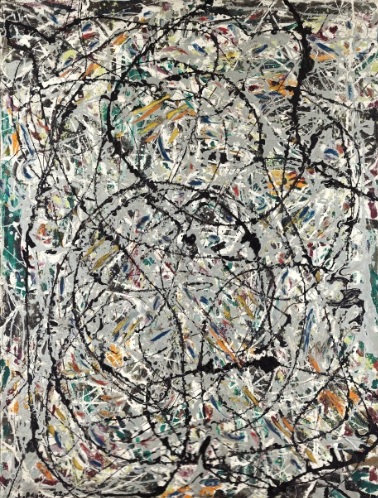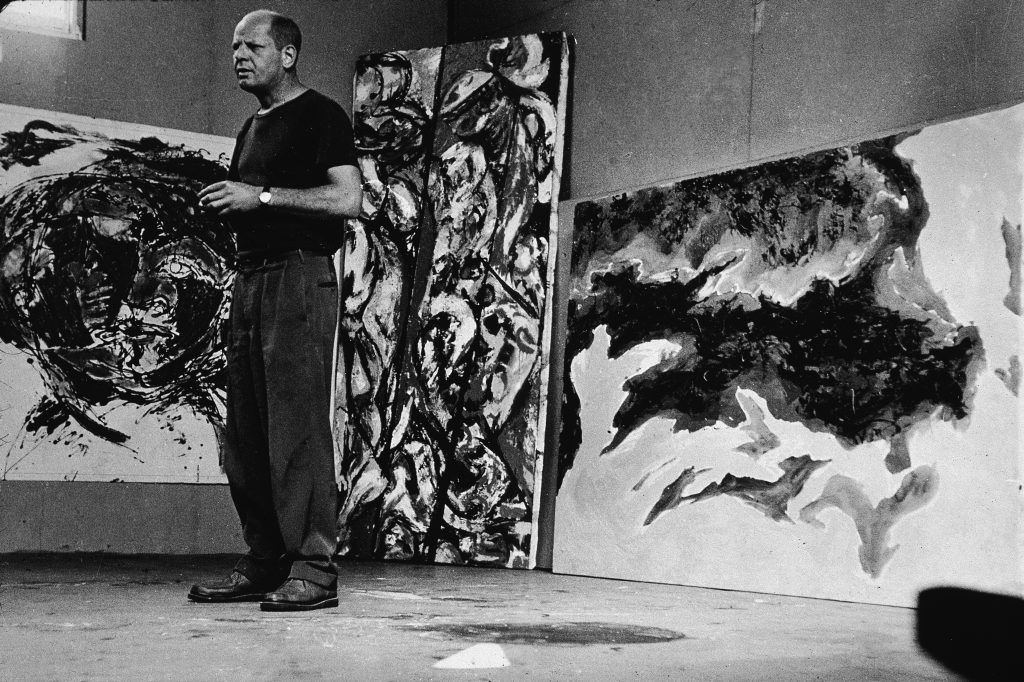American artist Jackson Pollock, Robert Motherwell and William Baziotes are a trio of American Modern Art; Peggy Guggenheim, an American art collector, bohemian and socialite, called them her ‘War babies’. Art readers know the basic of Jackson Pollock, and we need to know about the single painting titled ‘Watery Paths. Jackson Pollock is the most influential in Modern American Art in many ways, and he is the one who publicised Art through his action painting.

Modernity gives the freedom to the artist to do anything in the name of Art, and the artist can claim the Art. Jackso Pollock gives them liberation and hopefulness through his Art projects. Pollock brings back the people from the horrors of war and the aftermaths of war. Peggy Guggenheim plays a vital role in Pollock’s career; her monthly financial assistance helps him focus his artistic practice. Pollock used this time to go to unknown areas of Art practice, including the emergence of action painting, and she tasked Pollock to create a mural for her townhouse that would furnish a critical turning moment in his artistic trajectory. Modern artists influenced him and took a break from his prior infatuation with violence; after 1943, he re-oriented the path to excess involvement with healing self-definition.
“Extravagantly, not to say savagely romantic” is a comment on Pollock’s solo show, made by a critic, which gives an idea about his body of work. Why Pollock is imbued with archetypal identity tunes with the taste of Jungian psychology is always a matter of dialogue. We are trapped inside out when we start a discussion with his artistic gesture that brings us into the deep zones of colours and meanings. Like his other paintings, as he rerouted his style of making, Watery Paths is a dripping, made by dripping the paint from above to the canvas that makes a path to go somewhere. The colour creates Watery Paths.
Pollock took an imaginary ariel view of the Watery path on Earth, then started to paint that glimpse of the abstract. He used to balance the canvas with brush, swirls, and webs of colour enveloped around them. Pollock’s painting is a web of colours and grids of perception, which overlaps with many other elements, a partially grey-coloured background. His motion in the canvas makes more intrigues attempts to recall the imaginary bird’s view of ‘Watery Paths’. This painting exemplifies the paths of Pollock’s action painting and the action itself.
The primary element of Pollock’s work is ‘War’, which comes to him as proactive to artistic practice. For Pollock, War is a more emotionally explosive idea of many things, which he depicts hence.
‘Jackson Pollock’s psychological problems were but cruel tokens of the hardships of freedom. Therefore, the work of Pollock and other Abstract Expressionists represented the anxiety, alienation, and frustration that distinguished the free individual in the modern world. In other words, those artists stood out as perfect examples of liberalism. Guibault argued that although around 1948, the mainstream of American culture was still hostile to the avant-garde, the latter’s success was only a matter of time, writes Mao Qiuyue in the essay, The New York School and Ideology.
This critical view of Pollock’s life and painting is crucial to analysing his artwork and how that work connects with his time and space. Pollock let it be the ‘lines’ and perhaps waited for what is exciting in that lines; what they are proving and claiming. In Pollock’s work, nothing is real; everything merges with many things and is visible as an illusive world of unreality, making it a real-world experience.
Credit: Google Art and Culture

Krispin Joseph PX, a poet and journalist, completed an MFA in art history and visual studies at the University of Hyderabad.





